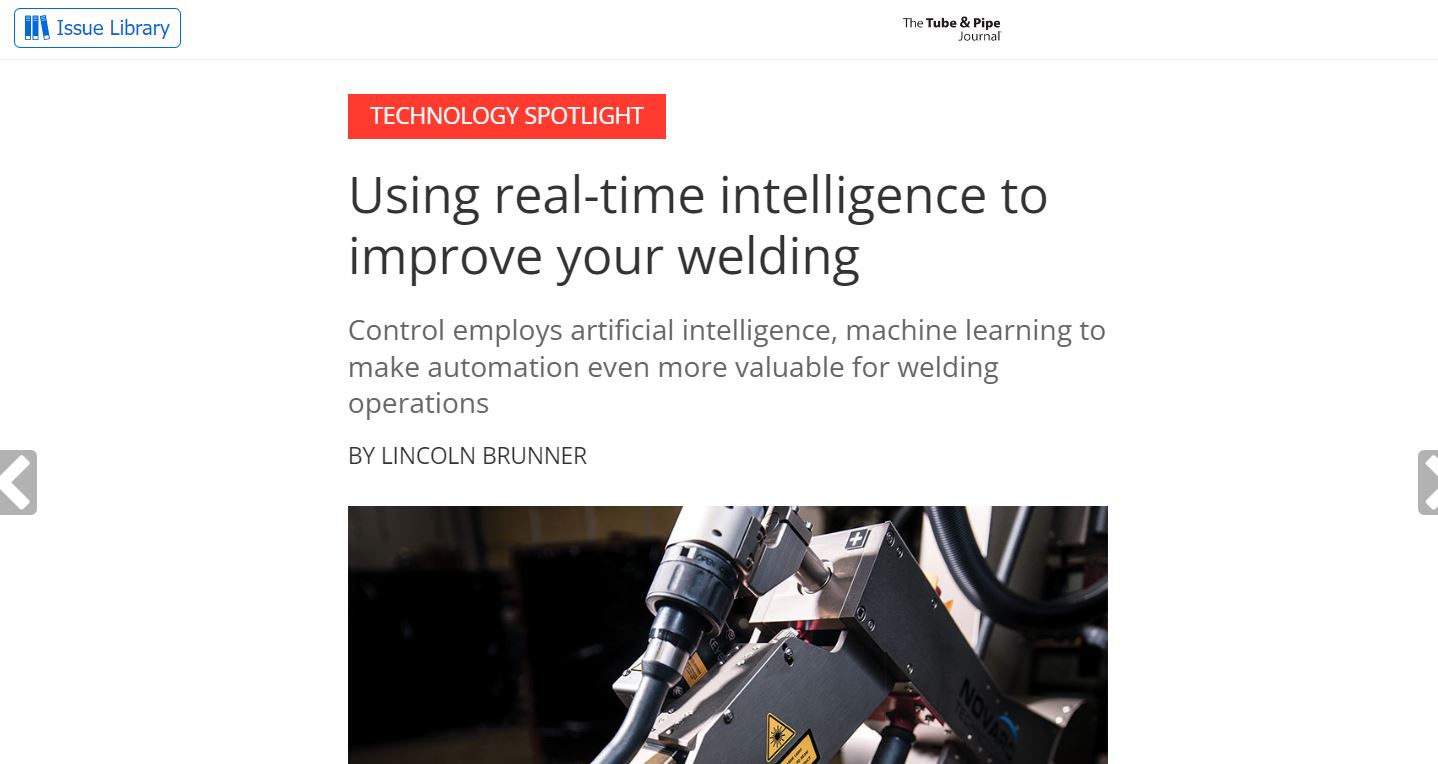Published By: The Tube Pipe & Journal
Control employs artificial intelligence, machine learning to make automation even more valuable for welding operations
Chaos theory says that unpredictability is a constant. If it needed evidence, then welding—with its long list of shifting variables—could be Exhibit A.
While a welding operation is navigating all those variables to produce clean welds, it also needs speed to stay competitive. However, simple automation often isn’t enough to keep up with the speed and sophistication of modern robotic welding technology. That’s where taking the leap into truly smart automatic welding control systems could prove the difference for shops of many sizes.
DRIVING SPEED AND QUALITY CONTROL
Every welder knows how to adjust basic parameters such as amperage, shielding gas, and line feed speeds according to different base materials, root gaps, and other variables.
However, fully manual welding simply isn’t an option for higher-turnover jobs: Bidding competitively for new jobs often increasingly means using some level of automation. What level, exactly? That all depends, but what’s certain is that preprogramming weld parameters never covers all the variables at play.
More than mere quality assurance, it is welding’s fundamental unpredictability that Novarc Technologies wants to help fabricators master with the NovEye vision-based, artificial intelligence (AI)-guided control system on its latest Spool Welding Robot (SWR). And while the orbital welding that the SWR does is nothing new, the AI and machine learning Novarc is using to drive the unit is. So noted Dr. Mahyar Asadi, vice president of innovation at Novarc Technologies, North Vancouver, B.C.
“Welding by its nature comes with lots of factors that are changing,” Asadi said. “More randomly, there’s a fluctuation in those variables. It has a direct effect on the quality of the weld.
“Everyone knows when you preprogram something, your weld comes with distortion,” he added. “When you start welding, parts are moving from the original position. The longer you go, the larger the parts you are welding, you are deviating more and more from your preprogram status, and it’s hard to predict which direction your part is going to move.”
Because not every shop’s needs are the same, Novarc offers different levels of automation, from simple mechanized welding to automated systems to smart machines that can learn better procedures over the course of time based on the data they record.
“We ultimately go for the smart machine,” Asadi said. “To keep the quality consistent and at the highest speed and productivity, then I think … the only solution you have is the automation and the intelligence to make sure you’re reacting.
“The more modern thinking is looking at those variations in real time,” he added. “The vision system looks at … the arc and all the weldment geometry that’s right under the arc, analyzes it, extracts features, and makes a proper adaptive decision to change the motion and parameters for that instance of time right under the welding.”
RESPONDING TO VARIABLES
For example, NovEye can perform tack detection in an open-root weld, say, between two pipes. The parameters needed for the SWR to do a clean weld in an open root are different from welding over the tack.
When an operator sets the machine, the vision system looks at the groove and keeps track of the open root, but the control system also is set to detect the tack. When the vision system detects a tack going under the weld, it switches the machine settings in real time to accommodate the tack. When it has passed over the tack, the system switches the recipe, as it were, back to open-root settings.
“Distortion is already built into the image, because that’s a real image of the part at the time of welding,” Asadi said. “That’s how we can tackle and solve the problem from prescanning.”…
